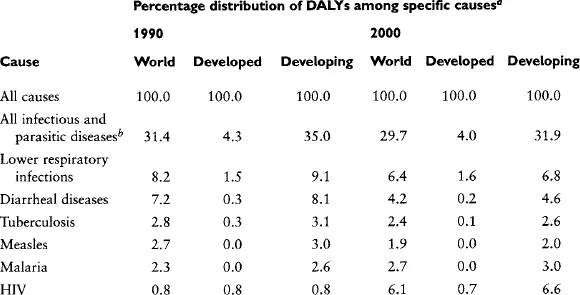
- 436 pages
- English
- ePUB (mobile friendly)
- Available on iOS & Android
The Vaccine Book
About this book
The Vaccine Book provides comprehensive information on the current and future world of vaccines. It reveals the scientific opportunities and potential impact of vaccines, including economic and ethical challenges, problems encountered when producing vaccines, how clinical vaccine trials are designed, and how to introduce vaccines into widespread use. Although vaccines are now available for many diseases, there are still challenges ahead for major diseases such as AIDS, tuberculosis, and malaria. The Vaccine Book is designed for students, researchers, public health officials, and all others interested in increasing their understanding of vaccines.Topics unique to this book: * Ethics * Economics * Diseases that could be prevented* Clinical trial designs* Ideas about the future of vaccines* Challenges facing research scientists in the vaccine area* Burden of vaccine-preventable illness and the impact of vaccines* Scientific obstacles to be overcome by existing and new vaccines* Basic mechanisms of host immunity and pathogen interaction with host tissues* New approaches to future vaccines against challenging diseases* Real and perceived safety issues which dominate vaccine development and vaccination policies* Microbial pathogenesis as a basis for vaccine design* Planning vaccine trials* Introducing new vaccines into the healthcare system * Future challenges for vaccines and immunizations
Frequently asked questions
- Essential is ideal for learners and professionals who enjoy exploring a wide range of subjects. Access the Essential Library with 800,000+ trusted titles and best-sellers across business, personal growth, and the humanities. Includes unlimited reading time and Standard Read Aloud voice.
- Complete: Perfect for advanced learners and researchers needing full, unrestricted access. Unlock 1.4M+ books across hundreds of subjects, including academic and specialized titles. The Complete Plan also includes advanced features like Premium Read Aloud and Research Assistant.
Please note we cannot support devices running on iOS 13 and Android 7 or earlier. Learn more about using the app.
Information
GLOBAL BURDEN OF DISEASE
PART A. The Burden of Vaccine-Preventable Diseases
I. INTRODUCTION. THE GLOBAL BURDEN OF INFECTIOUS AND PARASITIC DISEASES

II. BRIEF HISTORICAL PERSPECTIVE OF VACCINOLOGY
III. THE SMALLPOX ERADICATION ERA
Table of contents
- Cover image
- Title page
- Table of Contents
- Copyright
- Dedication
- CONTRIBUTORS
- PREFACE
- ACKNOWLEDGMENTS
- Chapter 1: GLOBAL BURDEN OF DISEASE: PART A. The Burden of Vaccine-Preventable Diseases
- Chapter 1: GLOBAL BURDEN OF DISEASE: PART B. Cost Effectiveness of Immunization: Asking the Right Questions
- Chapter 1: GLOBAL BURDEN OF DISEASE: PART C. Potential and Existing Impact of Vaccines on Disease Epidemiology
- Chapter 2: IMMUNOLOGY: PART A. Basic Immunology of Vaccine Development
- Chapter 2: IMMUNOLOGY: PART B. Immunological Requirements for Vaccines To Be Used in Early Life
- Chapter 3: TRIAL DESIGN FOR VACCINES: PART A. Clinical Development of New Vaccines: Phase 1 and 2 Trials
- Chapter 3: TRIAL DESIGN FOR VACCINES: PART B. Phase 3 Studies of Vaccines
- Chapter 4: ETHICS AND VACCINES
- Chapter 5: UNDERSTANDING MICROBIAL PATHOGENESIS AS A BASIS FOR VACCINE DESIGN: PART A. Bacteria
- Chapter 5: UNDERSTANDING MICROBIAL PATHOGENESIS AS A BASIS FOR VACCINE DESIGN: PART B. Disease-Oriented Approach to the Discovery of Novel Vaccines
- Chapter 5: UNDERSTANDING MICROBIAL PATHOGENESIS AS A BASIS FOR VACCINE DESIGN: PART C. Immunological Memory and Vaccines against Acute Cytopathic and Noncytopathic Infections
- Chapter 5: UNDERSTANDING MICROBIAL PATHOGENESIS AS A BASIS FOR VACCINE DESIGN: PART D. Parasitic Diseases, with an Emphasis on Experimental Cutaneous Leishmaniasis
- Chapter 6: DISEASE STATES AND VACCINES: SELECTED CASES: PART A. Introduction
- Chapter 6: DISEASE STATES AND VACCINES: SELECTED CASES: PART B. Polio
- Chapter 6: DISEASE STATES AND VACCINES: SELECTED CASES: PART C. Rubella
- Chapter 6: DISEASE STATES AND VACCINES: SELECTED CASES: PART D. Pertussis
- Chapter 6: DISEASE STATES AND VACCINES: SELECTED CASES: PART E. Rotavirus
- Chapter 6: DISEASE STATES AND VACCINES: SELECTED CASES: PART F. AIDS Vaccines: Challenges and Prospects
- Chapter 6: DISEASE STATES AND VACCINES: SELECTED CASES: PART G. Pneumococcus, Pneumococcal Disease, and Prevention
- Chapter 6: DISEASE STATES AND VACCINES: SELECTED CASES: PART H. Tuberculosis
- Chapter 6: DISEASE STATES AND VACCINES: SELECTED CASES: PART I. Malaria
- Chapter 6: DISEASE STATES AND VACCINES: SELECTED CASES: PART J. Human Papillomaviruses
- Chapter 6: DISEASE STATES AND VACCINES: SELECTED CASES: PART K. Helicobacter Pylori
- Chapter 6: DISEASE STATES AND VACCINES: SELECTED CASES: PART L. Genome-Based Approach for a Vaccine against Neisseria meningitidis
- Chapter 7: ECONOMICS OF VACCINES: FROM VACCINE CANDIDATE TO COMMERCIALIZED PRODUCT
- Chapter 8: VACCINE SAFETY: REAL AND PERCEIVED ISSUES
- Chapter 9: INTRODUCTION OF NEW VACCINES IN THE HEALTHCARE SYSTEM
- Chapter 10: FUTURE CHALLENGES FOR VACCINES AND IMMUNIZATION
- INDEX